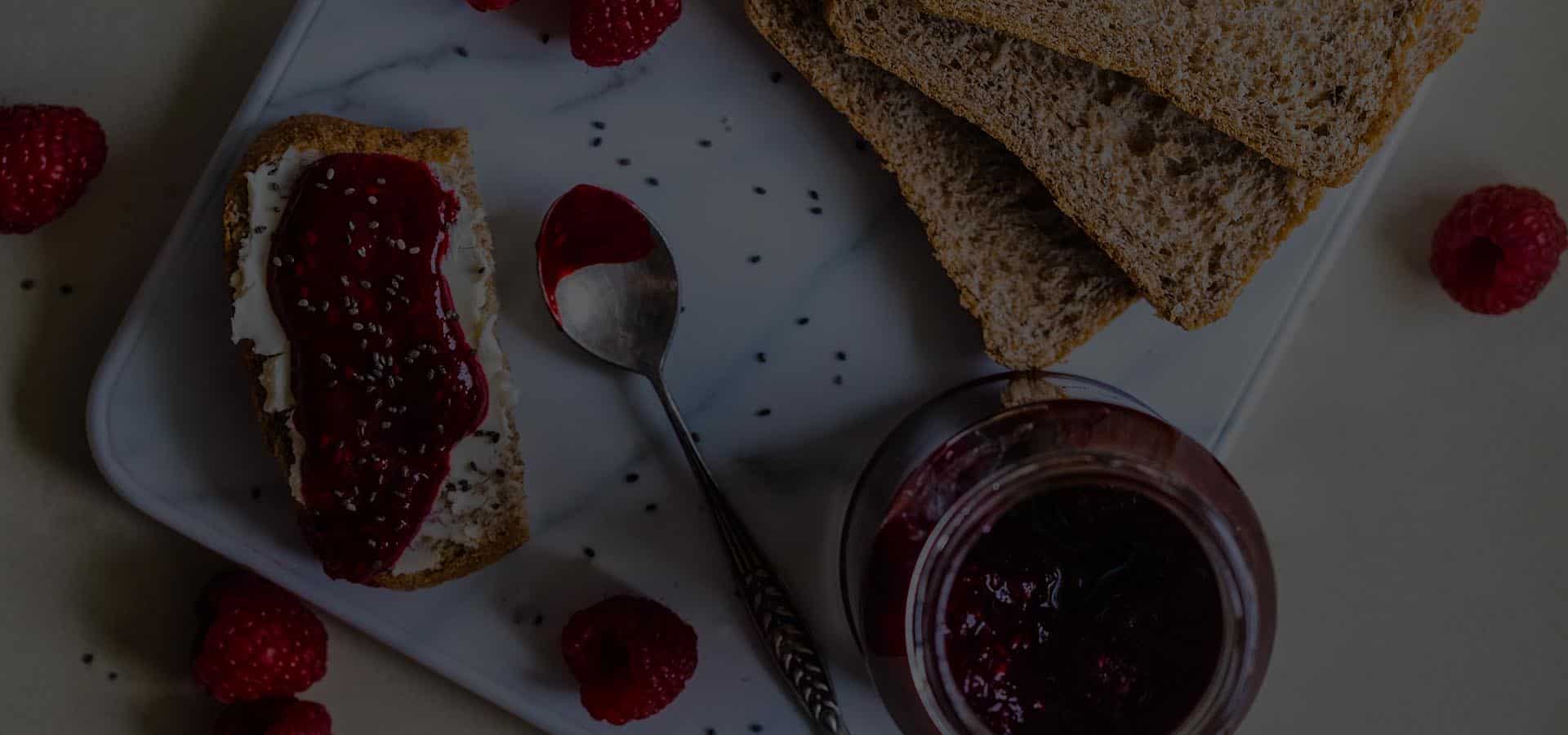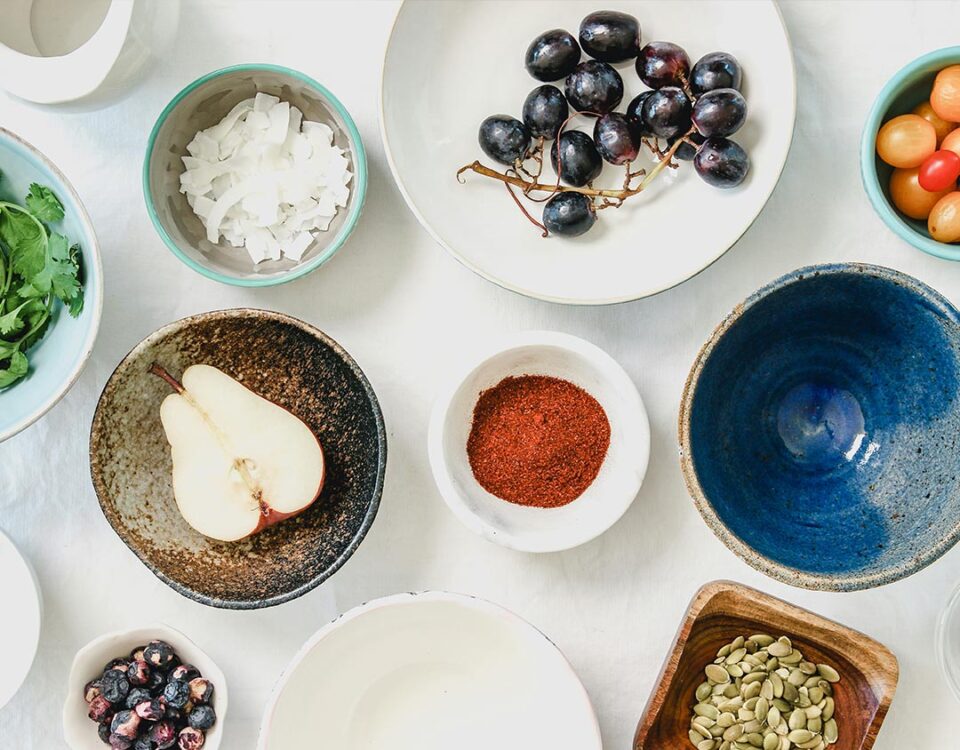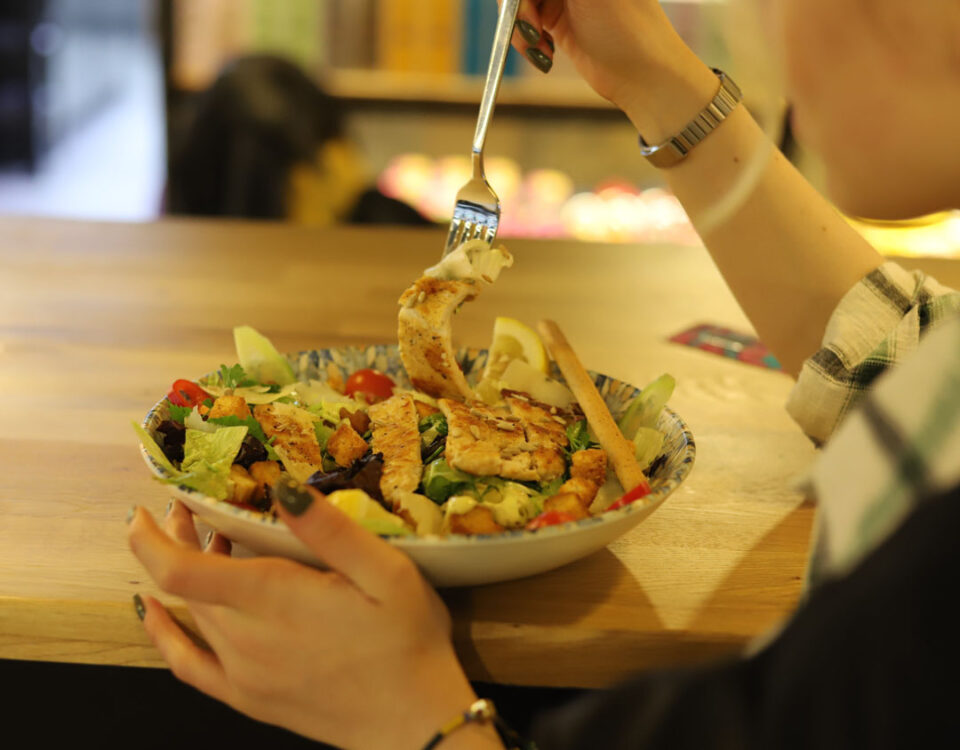
Vegetable Frittata Muffins
April 21, 2020
Berry Oat Crisp
April 23, 2020This chia seed jam is a quick and easy homemade substitute for store-bought jam, and is packed with health-promoting nutrients. Chia seeds have an incredible ability to absorb liquid and form a gel, which allows us to achieve that yummy jam-like texture.
I t only takes 10 minutes to prepare, keeps well in the fridge, and can be used in a variety of yummy ways:
- Spread on toast with peanut butter or cottage cheese for a quick, easy and balanced breakfast
- Layer with Greek yogurt and granola for a yogurt parfait
- Serve on pancakes or waffles (goes well with Gluten-Free pancakes, Banana pancakes or Cottage cheese pancakes - recipes coming soon!)
- Incorporate into other recipes, such as Chocolate covered marmalade cookies, No-bake muffins with raspberry filling or Choco-Pie (recipes coming soon!)
You can also mix up the flavours by substituting raspberries in the recipe for your favorite fruit and adjust the sweetness to your taste! Here are a few combinations you might like:
- Pear with ginger
- Mango and maracuja
- Orange and apricot
- Figs with honey
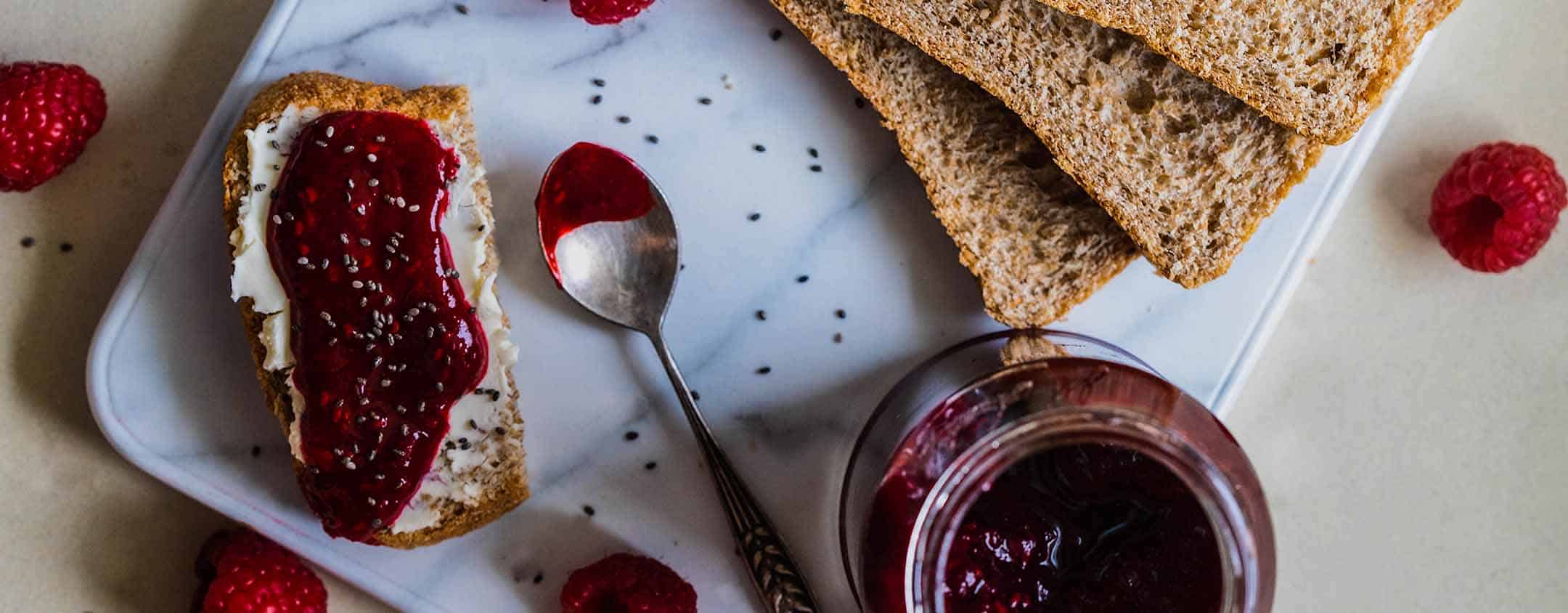
Chia Seed Jam
Ingredients
- 2 cups raspberries (250g) (frozen or fresh)
- 2 tbsp chia seeds
- 1-2 tbsp maple syrup*
- 2 tsp vanilla extract
Instructions
- Place berries in a saucepan on medium high heat
- Once the berries have softened, mash them using a potato masher or fork
- Reduce heat to medium and simmer for 5 minutes
- Add chia seeds, maple syrup, and vanilla to the puree, stir
- Remove from heat and set aside for 10 minutes to thicken
Notes
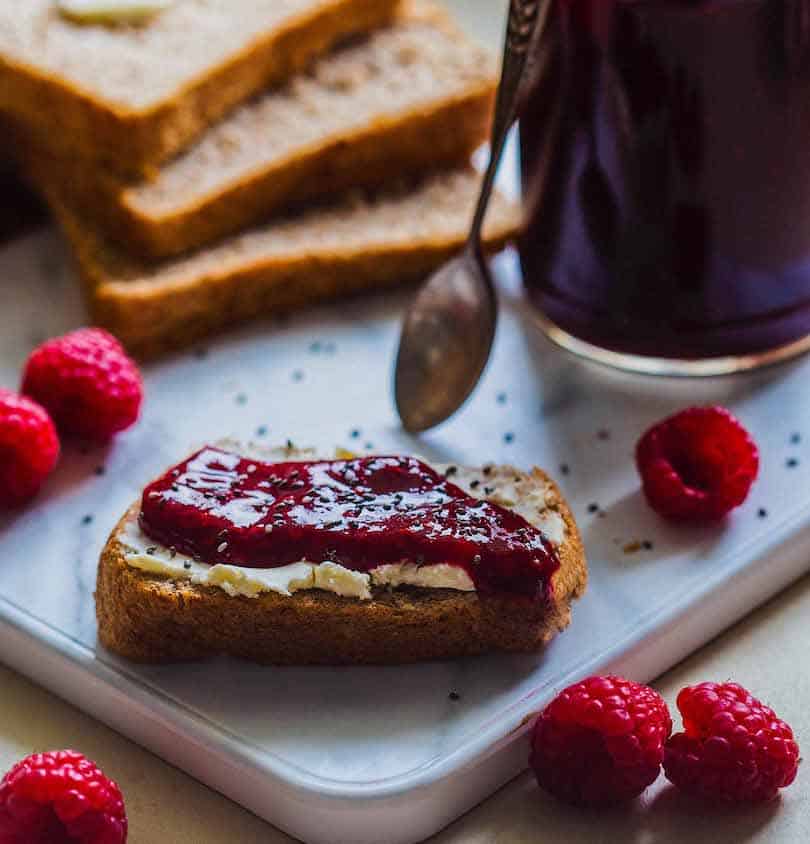
Health Benefits of Chia Seeds
I absolutely love the gel-like texture chia seeds form when they’re soaked in a liquid, for example chia seed pudding, chia drinks, and this chia jam. They’re also very versatile and low maintenance when it comes to incorporating them into recipes. They are packed with nutrients, which make them a great staple to have in your cupboard. Chia seeds are rich in fiber, protein, polyunsaturated fats, antioxidants, and other essential nutrients such as calcium, phosphorus and magnesium.
Most of the carbohydrates found in chia seeds are in the form of fiber, with the majority of the fibre being insoluble. Fibre helps to keep us full for longer after a meal, slow the release of sugar into our bloodstream, and promote regular bowel movements. It has also been shown to decrease our risk of heart disease, diabetes, and diverticular disease. Chia seeds are also a source of high-quality, plant-based protein, containing all nine essential amino acids. Three tablespoons (32g) contains 11 grams of fibre, which is 44% of a woman’s and 29% of man’s daily recommended intake of fibre, and 7 grams of protein.
Chia seeds are a fantastic source of plant-based omega-3 fatty acids, called ALA. A very small amount of this essential fatty acid can be converted into the more active omega-3 fatty acids, EPA and DHA, which are found in fatty fish and algae oil. Omega-3 fatty acids have been shown to help resolve inflammation in the body, support your immune system, and may even reduce the risk of heart disease. The calcium, phosphorus and magnesium content of these seeds also play an important role in maintaining bone health, regulating skeletal muscle activity and blood cell production.
Written by Sofya Borisenko and Liz Powell, RD
References:
- Albert CM, Oh k, Whang W, Manson JE, Chae CU, Stampfer MJ, Willett WC, Hu FB (2005). Dietary α-linoloenic acid intake and risk of sudden cardiac death and coronary heart disease. Circulation. 112(21):3232-8.
- Ullah R, Nadeem M, Khalique A, et al. (2016) Nutritional and therapeutic perspectives of Chia (Salvia hispanica L.). J Food Sci Technol. 53(4): 1750–1758.

